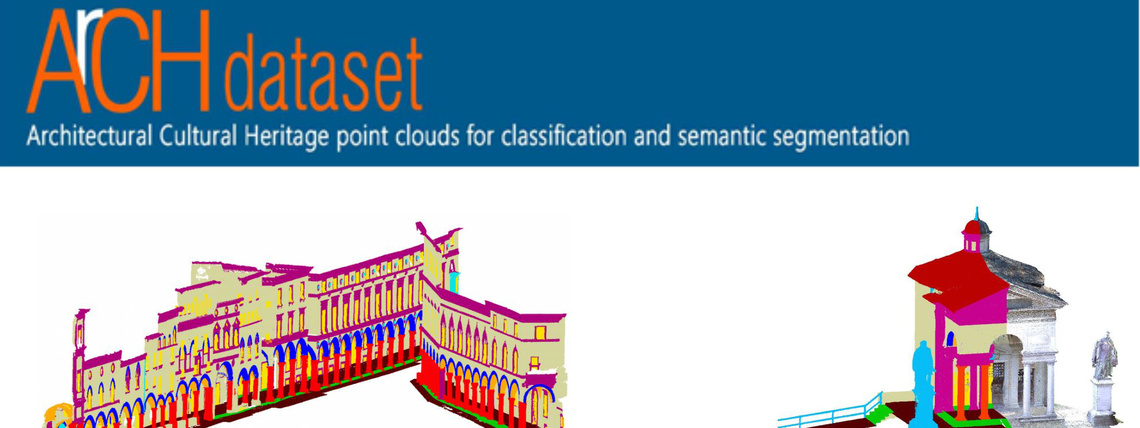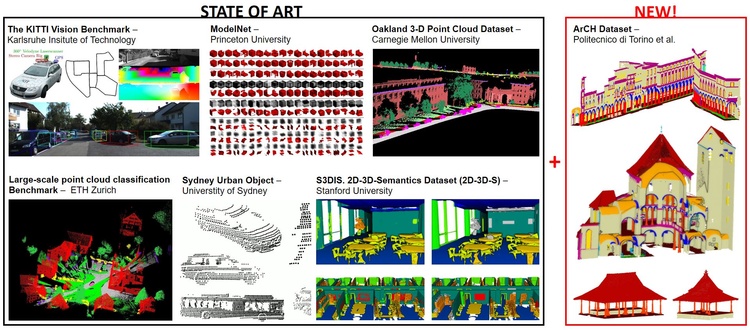The articles of the current edition are available on the new site.

The development of artificial intelligence techniques in the field of cultural heritage is an emerging topic and shows an increasing interest in the scientific community and citizens.
However, the lack of benchmarking data for the semantic segmentation of digital heritage scenarios – that is to say the association of each single point of a cloud to a specific component of buildings - is hampering the development of automatic classification solutions in this field. Such authomatic solutions would support different results, from comprehension of the object to its 3D reconstruction, to planned maintenance, to name a few.
Heritage point clouds feature complex structures and uncommon classes that prevent the simple deployment of available methods developed in other fields and for other types of data. The semantic classification of heritage 3D data would support the community in better understanding and analysing digital twins (digital copies of real objects and components that can be used to make simulations) as well as facilitate restoration and conservation works, verifying their efficacy before.
The proposed dataset, named ArCH – Architectural Cultural Heritage, is composed of 17 annotated scenes, derived from the union of several single scans or from the integration of the latter with photogrammetric surveys (102 million total points). Most of these scenes are part (or a candidate) of the UNESCO World Heritage List, e.g.: the chapel of the Strasbourg Cathedral inside the Grande Île; the courtroom of the Valentino’s Castle; the Sacro Monte of Varallo and Ghiffa part of the wider site of “Sacri Monti of Piedmont and Lombardy”; St. Pierre church located inside the Neustadt; the porticoes of Bologna presented as a candidate in 2020.
Other not labelled point clouds are available for the download and the scientific community is invited to contribute to this aim.
The realised benchmark originates from the collaboration of different universities and research institutes: promoters for Politecnico are Adrea Lingua, Marco Piras and Francesca Matrone (DIATI, Geomatics Lab and VR@polito) and Filiberto Chiabrando (DAD, Lab Geomatics for Cultural Heritage) with Università Politecnica delle Marche, FBK Trento – Italy - and INSA Strasbourg - France.

It is unique as it offers, for the first time to the research community, annotated point clouds describing heritage scenes. These point clouds, labelled with 10 classes, are meant to facilitate the development, training, testing and evaluation of machine learning algorithms as well as its subset of deep learning methods in the heritage field.
For a more profitable use of this benchmark, aside from free data download, we also provide public results of the submitted approaches, providing rankings about the most performing ones.